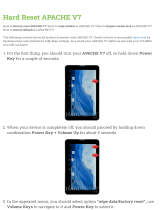
Contents
Using security features in the Embedded Web Server...............5
Understanding the basics...................................................................................................................................................5
Authentication and Authorization ..............................................................................................................................................5
Groups ...................................................................................................................................................................................................6
Access Controls...................................................................................................................................................................................6
Security Templates............................................................................................................................................................................6
Configuring building blocks..............................................................................................................................................7
Creating a password ........................................................................................................................................................................7
Creating a PIN......................................................................................................................................................................................7
Setting up internal accounts .........................................................................................................................................................8
Using LDAP ..........................................................................................................................................................................................9
Using LDAP+GSSAPI...................................................................................................................................................................... 11
Configuring Kerberos 5 for use with LDAP+GSSAPI .......................................................................................................... 13
Using NTLM authentication........................................................................................................................................................ 14
Securing access....................................................................................................................................................................15
Setting a backup password......................................................................................................................................................... 15
Setting login restrictions.............................................................................................................................................................. 16
Using a password or PIN to control function access.......................................................................................................... 16
Using a security template to control function access .......................................................................................................16
Scenarios.................................................................................................................................................................................18
Scenario: Printer in a public place............................................................................................................................................. 18
Scenario: Standalone or small office........................................................................................................................................ 18
Scenario: Network running Active Directory........................................................................................................................ 19
Managing certificates and other settings...................................................................................................................21
Managing certificates.................................................................................................................................................................... 21
Setting certificate defaults .......................................................................................................................................................... 22
Configuring confidential printing............................................................................................................................................. 22
Enabling and disabling USB devices........................................................................................................................................ 23
Disk wiping........................................................................................................................................................................................ 23
Encrypting the hard disk..............................................................................................................................................................24
Configuring security audit log settings ..................................................................................................................................25
Configuring 802.1x authentication.......................................................................................................................................... 26
Setting up SNMP............................................................................................................................................................................. 27
Enabling the security reset jumper ..........................................................................................................................................28
Contents
3




















